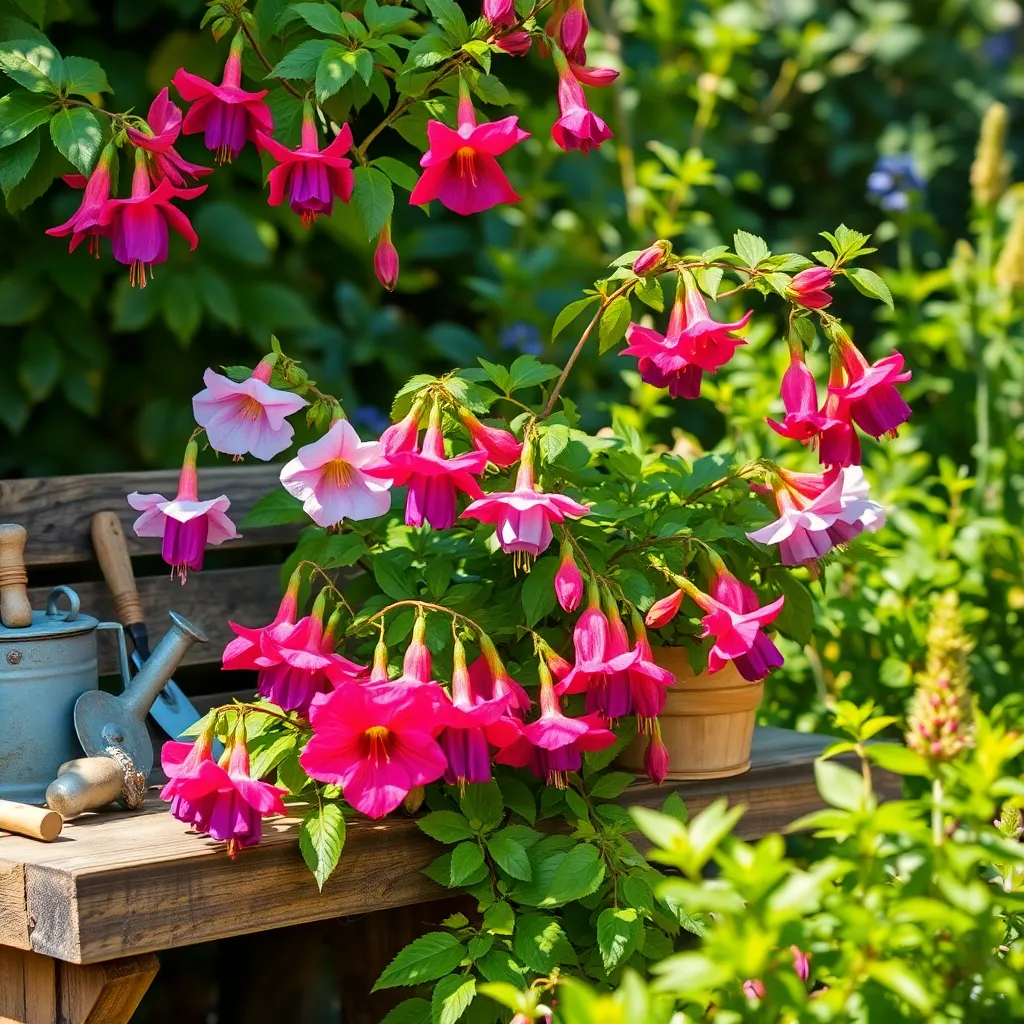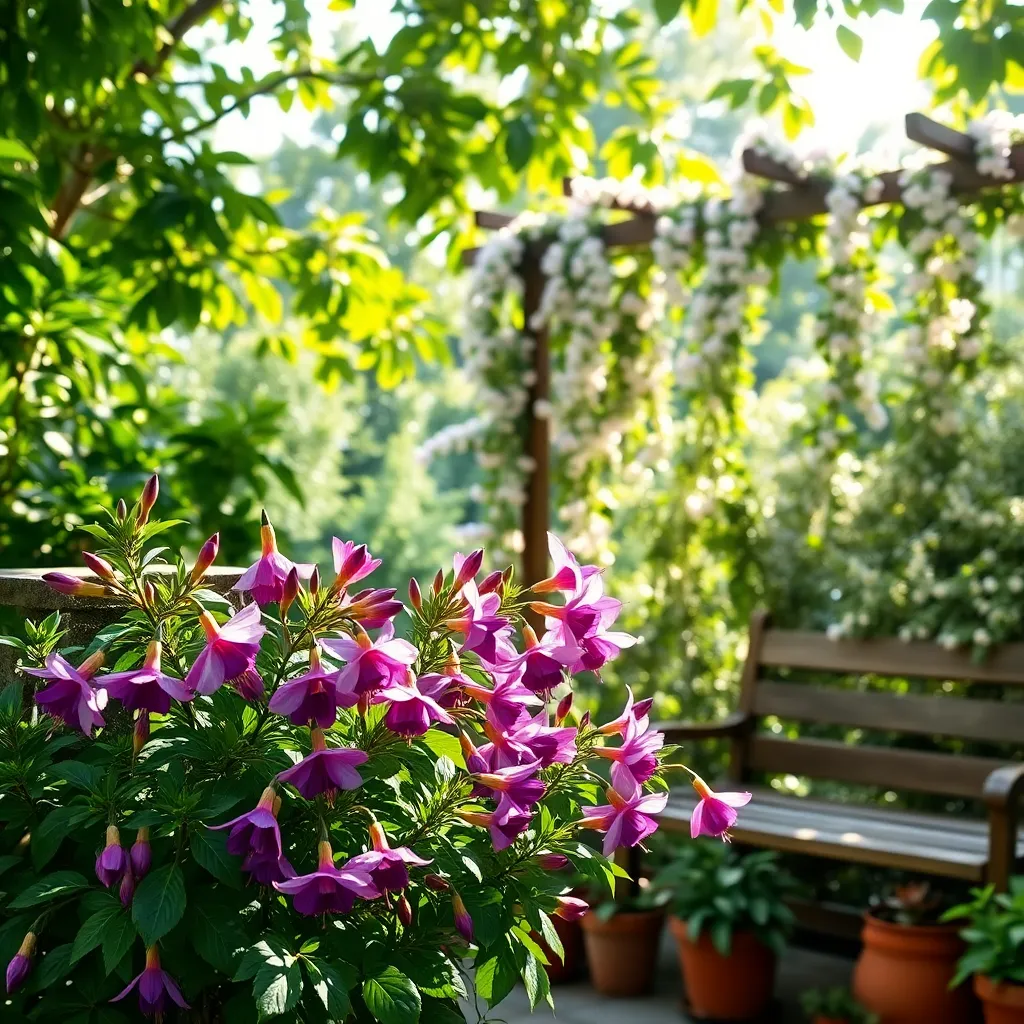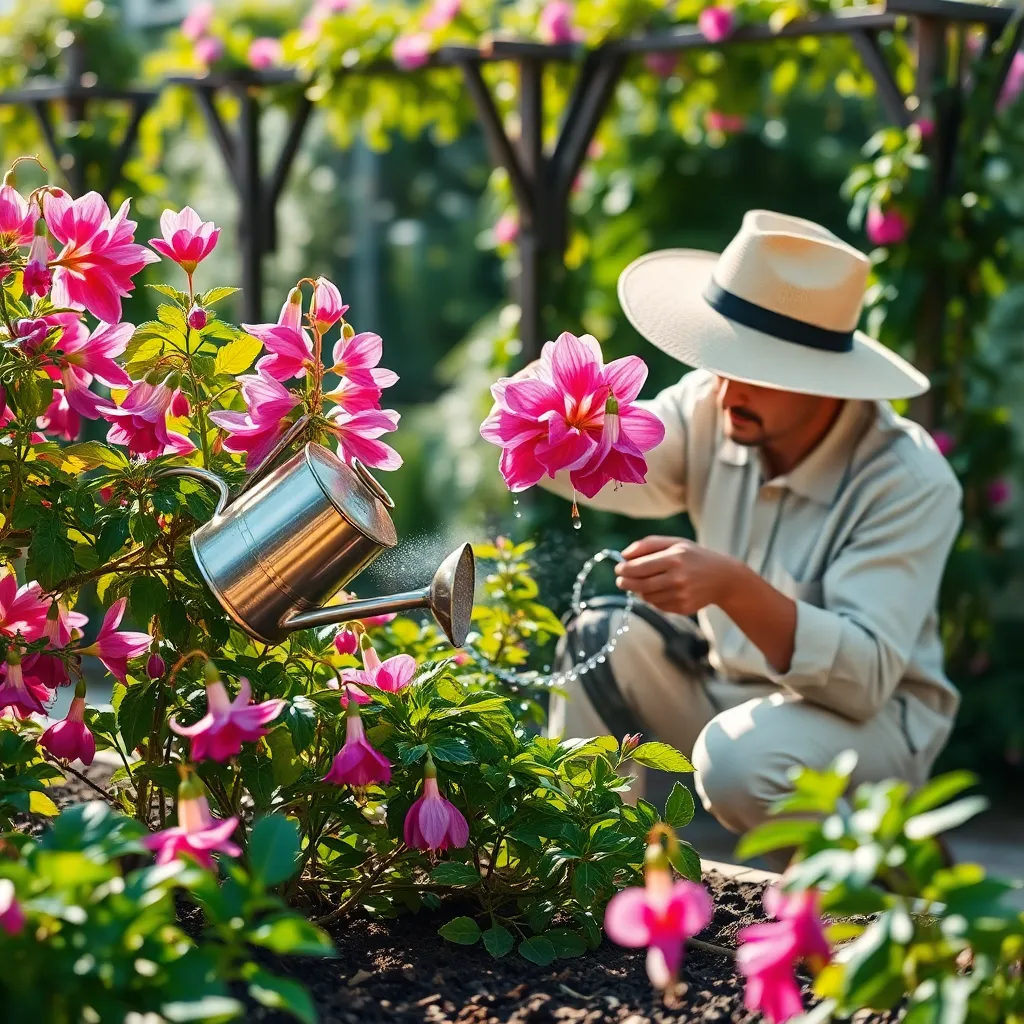There’s something truly magical about the sight of fuchsia flowers in full bloom, their vibrant colors dancing in the breeze like tiny, delicate lanterns. For both novice and seasoned gardeners, cultivating these stunning blossoms can be a rewarding endeavor, adding a splash of exotic beauty to any garden or patio. Whether you’re just starting out or have years of dirt under your fingernails, the journey to growing fuchsias offers a unique blend of challenge and delight.
Fuchsias are not only visually captivating but also serve as a testament to your gardening prowess, showcasing your ability to nurture these jewels of the plant world to their full potential. In this article, we’ll explore the secrets to growing fuchsia flowers, from selecting the right varieties and understanding their light and soil needs, to mastering the art of watering and pruning. With our guidance, you’ll be well-equipped to transform your space into a vibrant tapestry of color and life.
As you delve into the world of fuchsia cultivation, you’ll discover that these plants, though sometimes perceived as finicky, can thrive with just a bit of care and attention. We’ll provide you with practical tips and expert advice to ensure your fuchsias flourish, regardless of your climate or gardening experience. So, roll up your sleeves and prepare to embark on a gardening adventure that promises both beauty and satisfaction.
Select Suitable Fuchsia Varieties

Choosing the right fuchsia varieties for your garden is essential to ensure vibrant blooms and healthy growth. Consider your climate and garden conditions when selecting fuchsia types, as some varieties are more tolerant of heat or cold than others.
For beginners, hardy fuchsias like ‘Mrs. Popple’ are a great choice, as they can withstand cooler temperatures and require minimal care. These varieties thrive in well-drained soil enriched with organic matter, which helps retain moisture while preventing root rot.
If you live in a warmer climate, opt for heat-tolerant varieties such as ‘Gartenmeister Bonstedt’. These fuchsias prefer partial shade and should be watered regularly, ensuring the soil remains consistently moist but never waterlogged.
Advanced gardeners might explore trailing fuchsia varieties like ‘Trailing Queen’, perfect for hanging baskets or window boxes. Pruning is crucial for these types to encourage bushy growth and continuous flowering, so be sure to trim them back in early spring.
Prepare Well-Draining Soil Mix

To ensure your fuchsia flowers thrive, creating a well-draining soil mix is essential. This will help prevent waterlogging, which can lead to root rot, a common issue with fuchsia plants.
Begin with a base of high-quality potting soil, which typically contains a balance of organic materials and nutrients. For fuchsias, you’ll want to enhance drainage by adding perlite or coarse sand to the mix.
Perlite is a lightweight volcanic material that helps aerate the soil and improve drainage. Alternatively, you can use coarse sand, which also facilitates quick drainage, preventing water from accumulating around the roots.
For those with more experience, consider incorporating some compost or well-rotted manure into your soil mix. These materials not only improve drainage but also add nutrients that will benefit your fuchsia plants over time.
Mix your ingredients thoroughly to ensure an even distribution of each component, which will provide a uniform environment for your plants. By doing so, you’ll create a soil mix that supports healthy root growth and vigorous flowering.
Plant Fuchsia in Partial Shade

Fuchsia plants thrive in partial shade, making them an excellent choice for gardens with limited direct sunlight. These plants prefer an environment where they receive morning sun followed by afternoon shade to prevent their delicate leaves from scorching.
To ensure your fuchsia plants flourish, choose a location that provides dappled sunlight or filtered light. This type of lighting condition mimics their natural habitat, promoting healthy growth and abundant blooming.
When planting fuchsias, be sure to maintain a consistent watering schedule, as they appreciate moist, but not soggy, soil. Consider using a drip irrigation system or soaker hose to deliver water directly to the roots, ensuring even moisture distribution.
For optimal growth, incorporate a balanced fertilizer every four to six weeks during the growing season. Using a water-soluble fertilizer with an equal ratio of nitrogen, phosphorus, and potassium can help your fuchsias produce vibrant blooms.
Water Consistently, Avoid Overwatering

Watering fuchsia flowers consistently is crucial for their health, but it’s important to avoid overwatering. These plants thrive in moist but well-drained soil, so aim to keep the soil evenly damp without making it soggy.
When watering, consider the weather conditions and adjust the frequency accordingly. During hot spells, fuchsias may need more frequent watering, while cooler periods require less.
Use your finger to check the soil moisture level before watering. If the top inch of soil feels dry, it’s time to water; if it’s still moist, wait a day or two before checking again.
For advanced gardeners, incorporating a layer of organic mulch around your fuchsias can help retain soil moisture and reduce watering needs. This not only conserves water but also provides nutrients as the mulch breaks down, promoting healthier growth.
Prune Regularly for Healthy Growth

Regular pruning is essential to encourage your fuchsia plants to produce more blooms and maintain a healthy shape. By removing dead or weak growth, you allow the plant to direct its energy toward developing robust branches and flowers.
As a general rule, prune your fuchsia in early spring before new growth begins. Use sharp, clean scissors or pruning shears to make clean cuts, which helps prevent damage and reduces the risk of disease.
Trim back the stems by about a third to stimulate bushier growth and increase flower production. For those with more experience, consider pinching back new growth tips during the growing season to further promote a fuller plant.
It’s important to remove any leaves or stems showing signs of disease or pest infestation immediately. Regular inspections can help you catch problems early, ensuring your fuchsia remains vibrant and healthy throughout the season.
Conclusion: Growing Success with These Plants
As we’ve journeyed through the vibrant world of growing fuchsia flowers, we’ve uncovered five essential relationship concepts that apply to nurturing both plants and human connections. First, we explored the importance of providing the right environment—understanding that like fuchsias, relationships flourish in supportive settings. Next, we discussed the necessity of consistent care, emphasizing how regular attention and effort can make a relationship bloom. We learned about the balance of light and shade, illustrating how relationships need both joy and resilience to thrive. The concept of pruning taught us the value of letting go of what’s not serving us, and finally, proper nourishment underscored the importance of feeding relationships with love and communication.
Now, take a moment to reflect on these concepts and choose one small action to implement in your relationships today. This could be as simple as expressing gratitude or actively listening more intently.
Remember, nurturing relationships is an ongoing journey. Bookmark this article for inspiration whenever you find yourself needing guidance. As you continue to cultivate your connections, may you find them blossoming with vibrant love and understanding, paving the way for a future filled with relationship success.
